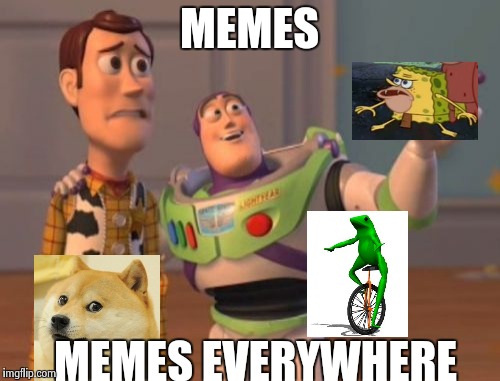We live in an era of memes. It is virtually impossible to use the internet and not be familiar with them. They are enjoyed by people from all walks of life, and can be created by anyone — from beginner “memers” to seasoned internet veterans. It’s hard to imagine the internet without memes. Memes have also become integrated into our daily lives. Just as study of classic literature and music is believed to improve our cultural views, knowledge of popular internet memes has become essential in this generation. It’s very easy to get lost in conversations without them.

The concept of memes had existed long before they became an internet sensation. In fact, the idea predates even the internet itself. In 1976, evolutionary biologist Richard Dawkins, in his book The Selfish Gene, first used the term and defined it as “a cultural idea spread throughout generations in the same way that genes do.” According to him, a meme can simply be any popular cultural idea that can be copied, imitated, and used as a unit of cultural inheritance — the same way genes transfer genetic information.
Internet memes as we know them today have their origin in the ‘90s, back in the dial-up internet days. They were not even known as “memes” back then. However, just like modern-day memes, they were mostly in the form of funny images, short videos, and GIFs. Demotivational posters and flash animation were very popular during this period. Some now refer to these memes as “pre-memes”.
In the mid 2000s, the rise of YouTube and Reddit made memes more easily accessible, which led to their gradual rise in popularity. It was during this period that the internet was shifting from a place for formal business communication to social networks built for fun and entertainment. Memes started to emerge as a new form of communication. Pepe the Frog was an offspring of this period.
A few years later in the early 2010s, modern-day memes flourished. It was also around this period that they started being referred to as “memes”. With the rise of social media, memes were shared like never before and eventually found their way out of the internet’s obscure corners into the mainstream. This was the age of one of the most successful memes genres ever: image macros. The simplicity of image macros — which are basically images with superimposed humerous texts — was a major factor for their popularity. Along with some of the classic memes, the internet saw the emergence of a more sophisticated class of memes informally referred to as “dank memes.”
The mid and late 2010s gave rise to a new system of meme sharing. Memes are being circulated on all social media platforms, such as Twitter, Facebook, Instagram, and more recently, Tiktok. They are shared at a much higher rate than the macros era. Dank memes are especially cryptic and witty, and understanding these memes requires knowledge of current events and trends, and fluency in modern popular lingo. “Super memes” became a thing — memes so popular they go viral on all social media and get recycled for weeks. There are also YouTube channels with millions of subscribers, in which the sole content is reviewing memes.
Considering their popularity, it is very important to know where the memes originate from, as the intention of memes can be deceiving. This is especially true for political memes. There have been cases where memes have been used to push political agendas on social media, and in recent years, there have been strong debates about whether meme culture has become toxic — with some even calling it a digital propaganda machine. However, despite these arguments, memes continue to get more popular by the day.
The internet is a very chaotic place, and at this point, memes are one of the few things online communities agree on. Memes serve as a universal language that unites communities. They are digital artistic expressions. Through memes, we celebrate our daily life and history. We also satirize the undesirable parts of our lives away. In a way, memes are like inside jokes we share with a community that understands our humor, feelings, and sometimes sorrow.
For now, memes are not showing any signs of slowing down. And as they have been doing so far, they seem to be continuously evolving and growing. Whatever meme culture will morph into, this generation has truly created immortal memes that will go down in history as some of the best.

